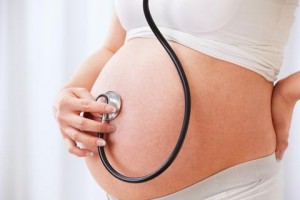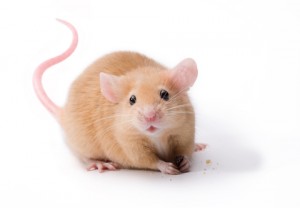July 25th, 2013 by drcoplan

This post highlights two papers that suggest an “environmental” cause for some cases of ASD – but probably not the environment you may be thinking of. We’re not talking about yeast in the gut, gluten in the diet, or mercury in vaccines (none of which, by the way, have been proven to cause autism). Rather, we’re talking about the intrauterine environment.
The first paper [1] compared the placentas of women who already had one child with ASD, to the placentas of women who had not previously had a child with ASD. (Placenta is fetal tissue, and abnormalities of the placenta are often a marker of associated abnormalities of fetal development.) The recurrence risk for ASD is about 10%. The hypothesis was that the placentas from the next pregnancy of mothers of children with ASD might differ from those of mothers whose previous children were all neurotypical. (This is termed a retrospective, case-control design.) The researchers identified a specific form of abnormality known as Trophoblastic inclusions (TI’s), that occurred 8 times more often in mothers of children with ASD compared to mothers of neurotypical children. Why TI’s are more frequent among mothers in the ASD group is unclear. TI’s themselves are unlikely to cause ASD; it’s what led to the formation of TI’s in the first place that remains to be discovered, through prospective research (enrolling a large sample of women prior to conception, tracking them through pregnancy, examining the placentas, and tracking the offspring for developmental outcome).
Read the rest of this entry »
Science in the News (a regular blog feature) OF MICE AND MEN
June 20th, 2013 by drcoplan

OF MICE AND MEN
As we wrote some time back, “autism spectrum disorder” is actually the final common behavioral outcome of numerous (perhaps hundreds, or thousands) of different underlying causes. It’s like saying your car has “car won’t start” disorder: It could be anything from a dead battery to no gas in the tank.
ASD is strongly genetic. The problem is, how to pin down the causative genes? There are 30,000 genes in the human genome, and approximately half of them are expressed in the brain. Thus far, the search for “autism genes” has been frustrating and slow. Researchers have identified hundreds of individual candidate genes, but each particular genetic abnormality is rare, and accounts for only a handful of cases. Some of these same genes have been studied in animal models, and have been associated with abnormalities of social behavior, grooming, vocalization, etc. – animal analogs of human autism.
Now an international research team has identified a network of genes about 190 that “talk” to one another (see box). These genes were selected based on known rare variants in humans with ASD, and on genes known to cause brain or behavioral abnormalities in mice. It turns out that humans with ASD have, on average, abnormalities of 3 or 4 genes within this network – seldom the same specific ones, but sufficient to disrupt the functioning of the entire network. In the authors’ words, “perturbations arising from distinct deletions or duplications…yield a common outcome” – ASD.
Read the article:
Network Topologies and Convergent Aetiologies Arising from Deletions and Duplications Observed in Individuals with Autism
This work is exciting for several reasons: First, the brain itself is organized into functional networks: “No gene is an island!” So by adopting a network-centric strategy, rather than looking for specific “autism genes,” the researchers are capitalizing on the functional architecture of the brain itself, as a way of speeding up the search, sifting through a “haystack” of 15,000 genes to find the relative handful of “needles” implicated in ASD. Second, as we learn more about how individual genes within a network (actually, the proteins encoded by those genes) “talk” to one another, we will eventually find ways to edit the conversation: The whole field of controlled synaptogenesis – growing new neurons – lies just over the horizon. It may sound like “Jurassic Park,” but eventually, the goal is to be able to turn specific genetic signals on or off, to rebuild deficient neural networks. Finally, this work converges on what we know clinically: Not only ASD, but non-ASD neuropsychiatric and neuropsychological problems run in families of children with ASD (read more about the familial clustering of mental health issues and ASD in my book: Making Sense of Autistic Spectrum Disorders: Create the Brightest Future for Your Child with the Best Treatment Options. Some of the same genes implicated in the neural network capable of giving rise to ASD are also involved these other disorders. The “bright line” between ASD as a developmental disorder, and other conditions as “emotional disorders” does not really exist, at a biological level. More on this another time.














